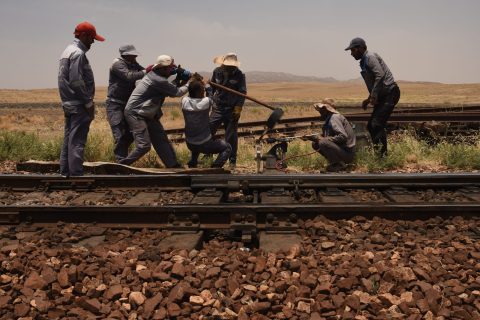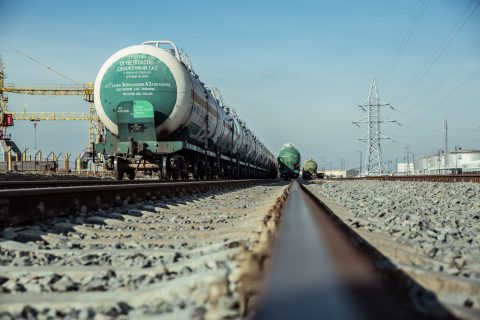‘Freight tariffs on the New Silk Road must be safeguarded’

Part of the success of the New Silk Road are the attractive freight rates for transport by rail between China and Europe. Especially eastbound traffic enjoys favourable tariffs. However, these tariffs may not always remain the same, as they depend on subsidies, market mechanisms and operation efficiency. The Group of European TransEurasia Operators and Forwarders (GETO) and New Silkway Logistics explain what the future holds for this appealing freight trend and what is needed to safeguard a competitive pricing system.
The Belt and Road Initiative was announced in 2013 by the Chinese leader Xi Jinping. By investing in a rapidly growing network of railway connections between China and Europe, the transport of goods along the old Silk Road trading routes witnessed a major boost. Between 2013 and 2016 cargo traffic quintupled in weight. In the first half of this year the value of cargo carried by train increased with 144 per cent year-on-year. Especially western companies are jumping onboard as they are starting to see value in moving cargo by rail, rather than via the conventional deep sea route.
Subsidised costs
Part of the incentive for eastbound traffic has been the subsidised tariffs implemented by the Chinese government through the Silk Road Fund. “All freight rates on the Trans-Siberian or Trans-Kazachstan route are subsidised. Therefore, rates to the market are lower than the original costs”, explained GETO (previously the Association of European Trans-Siberia Operators and Forwarders). The Swiss organisation represent the interests of European operators and supports the increase of overall traffic on the Eurasian railway connection.
“Following an equal trend in deep sea freight transport, eastbound traffic requires more incentive and thus, market prices along this route are lower than in the other direction. While eastbound freight rates are subsidised by about fifty per cent, in the direction of Europe this accounts for 25 per cent,” the company explained. The main objective is to create equal balance between cargo moving east and west, in addition to increasing cargo volumes in general, points out New Silkway Logistics, a freight operator on the route to China. “Once this balance is there, train services should be able to operate without subisidies.”
Fluctuations
It is not clear until when subsidies will be in place, but the expectation is that a gradual phase out will start sometime after 2020. At the moment, end-market prices are still relatively stable, as they are much less vulnerable to market trends than see freight, points out the freight company, which consists three railway operators from the Netherlands and Belgium. Yet, customers may experience slight price increases. “Tariffs on the westbound corridor have increased slightly, as the market mechanism of supply and demand does affect tariffs in this direction. As the demand has increased and the supply on trains is limited, prices have gone up a little.”
In order to accomplish a balance between east- and westbound traffic and safeguard the competitive pricing system on the corridors once subsidies have stopped, actual costs are continuously on a decrease. “Most railway managers and operators are likely to push the downward trend of actual costs, an indispensable trend to safeguard the train offers for the long term in especially the eastern direction”, GETO explained. However, exceptions also apply here; actual prices have seen a slight increase on the Chinese side. “By now, capacity on the eastbound route has reached more than fifty per cent. In response, some state-owned and a few private regional forwarders have started adjusting the rates slightly upwards. In this way they are less dependent on the subsidies”, the lobby organisation says.
Empty stock
More directly, an increase in eastbound traffic serves the rail freight industry in that rolling stock is used more efficiently. As almost twice as many trains depart in western direction, rolling stock often gets stuck in Europe, resulting in storage costs or the return of empty equipment by rail. Other than in deep sea freight, delivering empty stock is not costless, points out GETO. “In rail freight, the return of empties can cost approximately fifty per cent of the rate.
“With increasing volumes in eastern direction, the situation is improving. The increase in eastbound traffic supports the return of locomotives, rolling stock as well as container equipment and thus, the cost of rail freight is decreasing by each percentage we increase eastbound traffic,” notes GETO. The stocking of empty equipment applies in particular to special equipment such as reefer containers. However, these are used more again in winter, making a price reduction of returning empties seem needless, adds New Silkway Logistics.
Border hubs
In establishing so-called hub systems at CIS entry and exit border points, GETO sees another measure to cut costs and thus increase competitiveness. “Europe and China have different rules when it comes to the maximum length of trains. In China, the railway network allows trains up to a 41×40 foot container length, whereas CIS countries can handle trains up to 60×40 foot container length. “Using border hubs to form longer trains for the journey through the CIS countries, to break these down into smaller lengths once entering the European railway, will guarantee the maximum capacity of trains accepted on the respective part of the routes.”
Final destination
Finally, the competitiveness of rail freight between Europe and China depends on the route and final destination, notes New Silkway Logistics. “At some Chinese locations, all products must be declared, while at other locations declaring products is not possible at all. Furthermore, if the final destination is land inwards, rather than near a Chinese port, rail freight may be a viable option compared to deep sea freight, which now still offers must lower rates. Especially when you take into account the reduced transit times, rail freight can compete with sea freight”, the company says.
You just read one of our premium articles free of charge
Want full access? Take advantage of our exclusive offer





